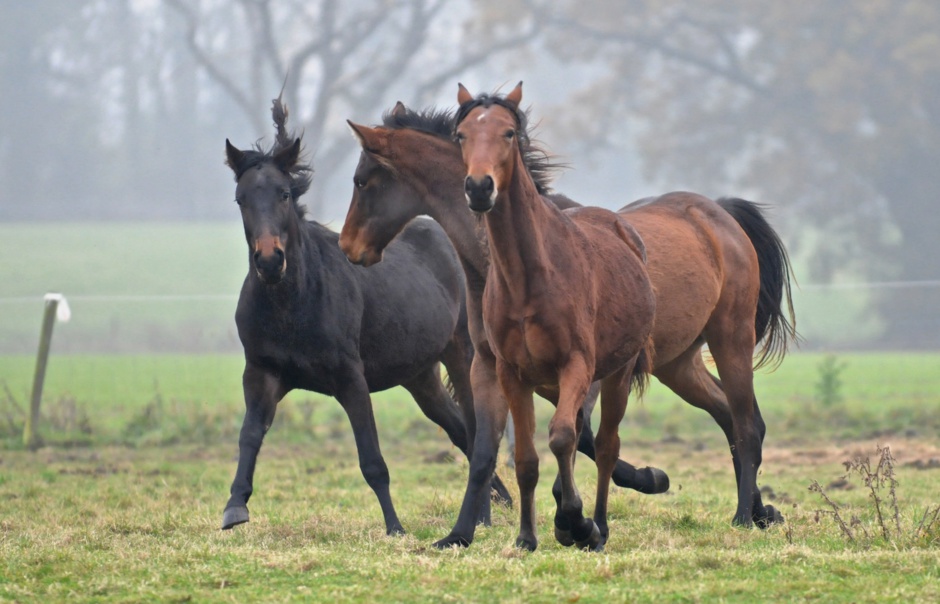When it comes to teaching a horse to lead, understanding the basics is crucial. Whether you’re a beginner or experienced, the process requires patience, technique, and understanding of your horse’s behavior. Leading is a fundamental skill that builds the foundation for further training and ensures safety for both handler and horse.

Understanding Your Horse
Before you begin teaching a horse to lead, it’s important to understand your horse’s natural instincts. Horses are prey animals, and their survival instincts may sometimes make them hesitant. Establishing trust is the first step in overcoming these instincts.
Building Trust
Building trust with your horse can take time. Spend time with your horse outside of training sessions. Grooming, feeding, and simply being present can help strengthen your bond. A horse that trusts its handler is more likely to respond positively to leading training.
Basic Equipment for Leading
Having the right equipment is essential for teaching a horse to lead effectively. A well-fitted halter and a lead rope are the primary tools you’ll need. It’s important to ensure these are comfortable for the horse to prevent any discomfort that might make them reluctant to train.
Choosing a Halter
Select a halter that fits well. It should sit snugly but not too tight, allowing for comfortable movement. A poorly fitted halter can cause irritation, affecting your training sessions negatively.
Step-by-Step Guide to Leading
Once you have a good relationship with your horse and the right equipment, you can start the leading training. Here’s a step-by-step guide to help:
Step 1: Introduce the Lead Rope
Start by familiarizing your horse with the lead rope. Let them sniff and touch it. This helps reduce fear or anxiety associated with new equipment.
Step 2: Stand by Your Horse’s Side
Position yourself at the horse’s shoulder, facing the same direction. This position naturally encourages the horse to follow your lead.
Step 3: Gentle Pressure
Apply gentle pressure on the lead rope to encourage movement. Release the pressure as soon as the horse takes a step forward. This teaches the horse to move in response to pressure.
Step 4: Reward and Reassure
Positive reinforcement is key. Reward your horse with gentle pats or treats when they follow your lead. This encourages them to repeat the desired behavior.
Common Challenges in Leading
As with any training, challenges can arise. Understanding these challenges and how to address them is vital for successful leading training.
Resistance to Moving Forward
Some horses may resist moving forward. In such cases, patience is crucial. Break down the training into smaller steps and reward any progress.
Spooking and Anxiety
Horses can be easily spooked by unfamiliar surroundings. Training in a quiet, familiar environment can help reduce anxiety.
Advanced Leading Techniques
Once your horse is comfortable with basic leading, you can introduce advanced techniques. These include leading over obstacles or through different terrains, which enhances their confidence and obedience.
Leading Over Obstacles
Introduce small obstacles such as poles or cones. This not only teaches the horse to follow your lead but also improves their agility and coordination.
Leading in Different Environments
Gradually introduce your horse to different environments. This helps them become adaptable and reduces stress in new situations.
Maintaining Consistency
Consistency is a cornerstone of successful horse training. Keeping a regular training schedule helps reinforce what the horse has learned and prevents regression.
Regular Practice
Incorporate leading exercises into your daily routine. Short, consistent sessions are more effective than sporadic, lengthy ones.
Monitor Progress
Track your horse’s progress regularly. Acknowledge improvements and adjust training techniques as needed to continue advancing their skills.
Conclusion
Teaching a horse to lead is a rewarding journey that strengthens the bond between horse and handler. With patience, understanding, and consistent practice, you can develop a well-trained horse that confidently follows your lead.

FAQs
Q: How long does it take to teach a horse to lead?
A: The time it takes varies depending on the horse’s temperament and the consistency of training. Some horses learn quickly, while others may take longer.
Q: Can I use treats to reward my horse during leading training?
A: Yes, treats can be a great motivator. Just ensure they are given in moderation to maintain a balanced diet.
Q: What if my horse refuses to move?
A: Patience is key. Break the task into smaller steps and reward any progress. Consulting a professional trainer may also be beneficial.
For more detailed guides on horse training, you can visit Horse Training Techniques or explore Horse Training Tips for additional insights.
This article contains affiliate links. We may earn a commission at no extra cost to you.







